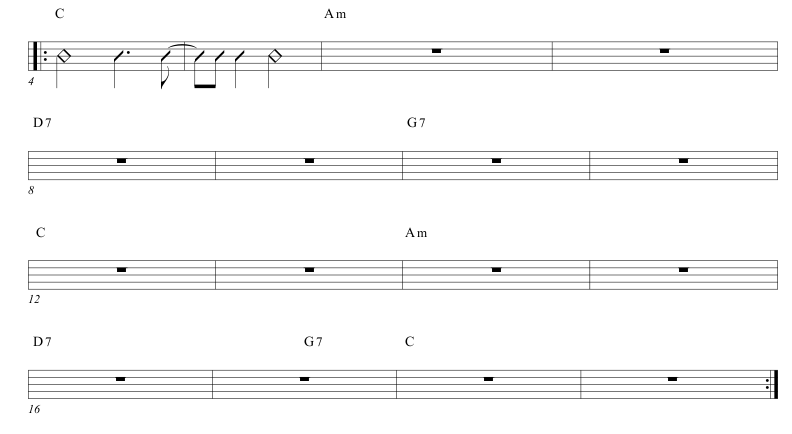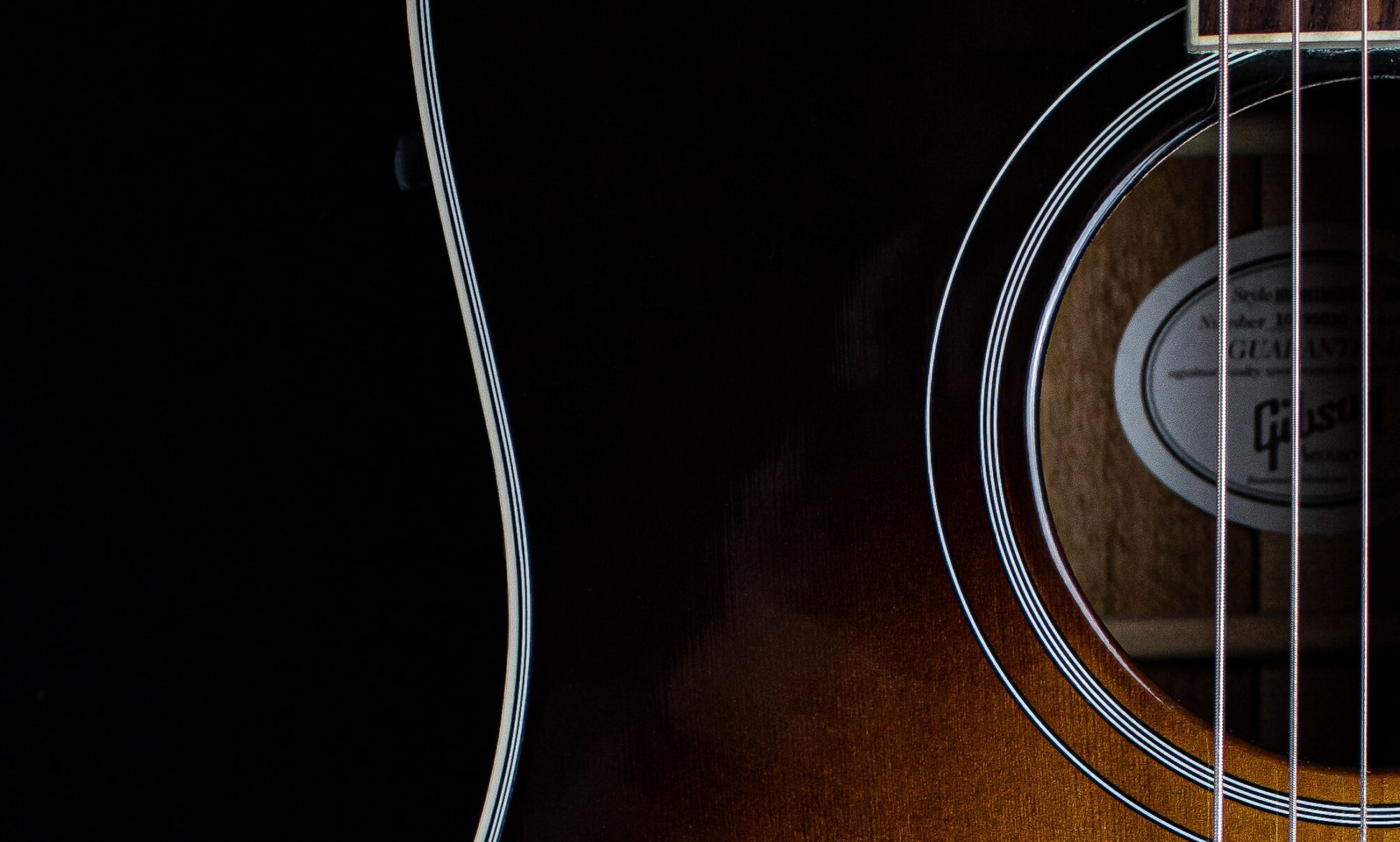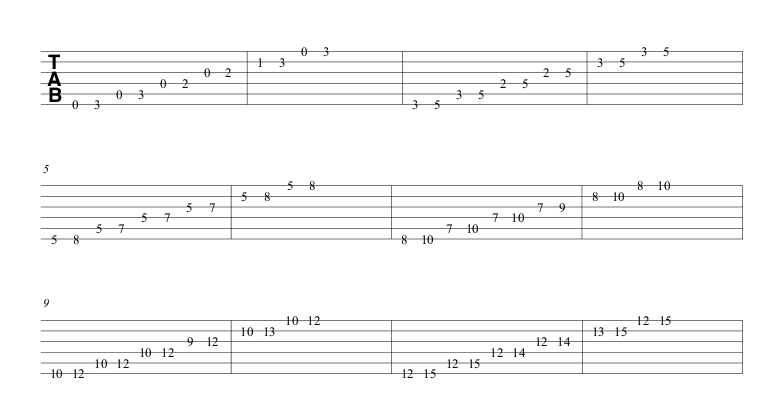This practice track is done in an Indie Rock style. The rhythm section is composed of drums, bass, and rhythm guitar, with a tenor guitar line that is similar to the bass part, but an octave higher, and playing on all the beats.
The progression replaces the diatonic D minor chord which fits with the C major scale, with a dominant seventh chord, the D7. This substitution is a common one in Jazz and swing tunes, and gives the progression a stronger blues flavour than would otherwise be the case.

(1) The simplest approach to soloing is to play in C major throughout, being careful to avoid F over the D7, which would clash with its F#.
(2) A more sophisticated approach is to play in C major, changing to D mixolydian (G major) for the D7 chord. One can then outline the chromatic decent from F# in the D7 chord, to F in the G7 chord, then E in the C major chord, to effectively emphasise the changing harmony.
(3) Another approach is to play exclusively in the A minor pentatonic scale (C major pentatonic), using bends to reach chord tones. E.g. over the D7 chord bend from E (in the A minor pentatonic scale) up one tone to F# (chord tone in D7); also bend from G up a tone to A (chord tone in D7, and also in A minor pentatonic scale). Likewise over the G7 chord, bend from A (A minor pentatonic) up a tone to B (chord tone in G7), bend from E (A minor pentatonic) up a semitone to F (chord tone in G7). There are four such bends for each of the four tones in each chord, however some of them will finish on chord tones outside the A minor pentatonic, others will end on chord tones included in the A minor pentatonic.
It turns out that the melody for the children’s nursery rhyme “Have you seen the Muffin Man” can be played over this progression, an example of approach (1). Below are examples of the three approaches outlined above:
Lead approach (1)
Lead approach (2)
Lead approach (3)
Now, try your own:
Practice track with no lead
Have fun!


